zoethica.com
Installations in Olbrich Botanical Gardens:
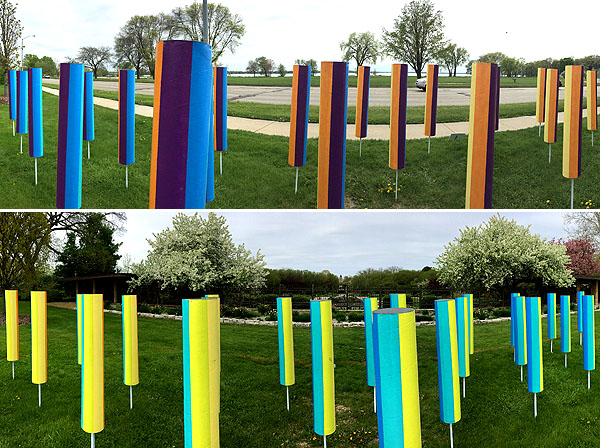
Artist: Peter Krsko
Title: "Iridescence"
Many organisms in nature exhibit colorization that is not a result of pigments, but ordered nanoscopic structures that cause reflected light to interfere with itself. Looking at a peacock feather at varying angles, it changes color, because the colors get either reinforced or canceled. Walk through the installation and experience its changing color.
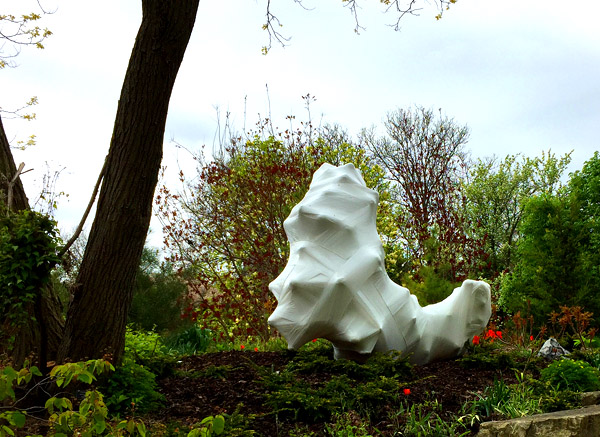
Artist: Dan Steinhilber
Title: "Untitled"
Any fantasy I may have had to make some marble statuary for a garden changed with the improvisation of cytoskeleton structure, silk worm wrapping and the natural “behavior” of these unnatural materials used in agriculture.
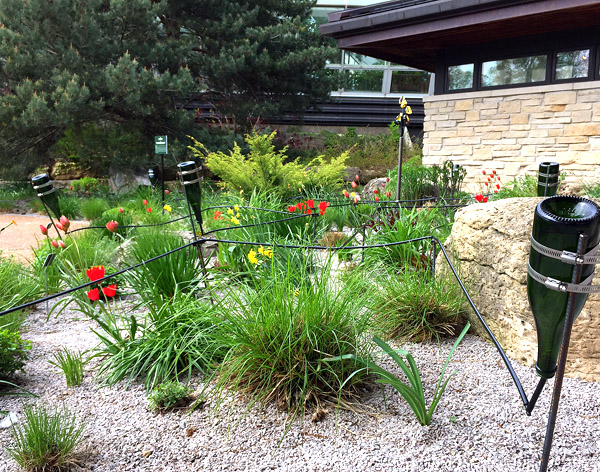
Artist: Evan Eifler
Title: "Solar Rhythm Visualized"
The idea behind the piece is to mimic flowers by creating a kinetic sculpture that uses properties of nature to open and close with the light of the sun. The bifurcating tubes radiate from a central balloon, each ending in a recycled glass bottle. As the sun warms the airtight system throughout the day, the air within the bottles and tubing expands, inflating the balloon.
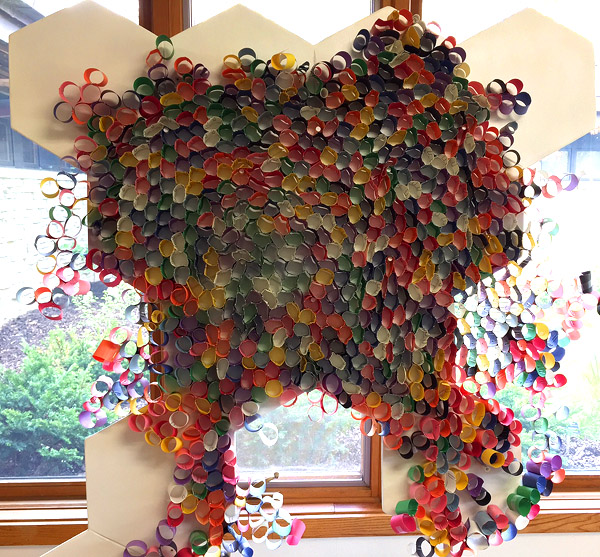
Artists: Various
Title: "Honeycomb"
Add your own compartment to the constantly growing honeycomb. This community project has been growing through the entire length of Krsko’s residency at the UW–Madison Arts Institute.
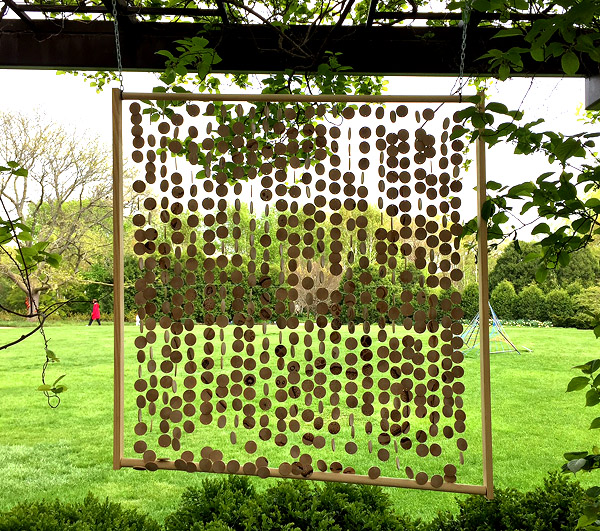
Artist: Kimberly Gromek
Title: "Apoptosis"
Apoptosis is programmed cell death that is a normal part of an organism’s development. Current research is looking to utilize this controlled mechanism of death as defense against viruses and other foreign intruders. To achieve apoptosis, the cell self-destructs from the inside out, destroying its own structure, but not leaking it to the surrounding environment.
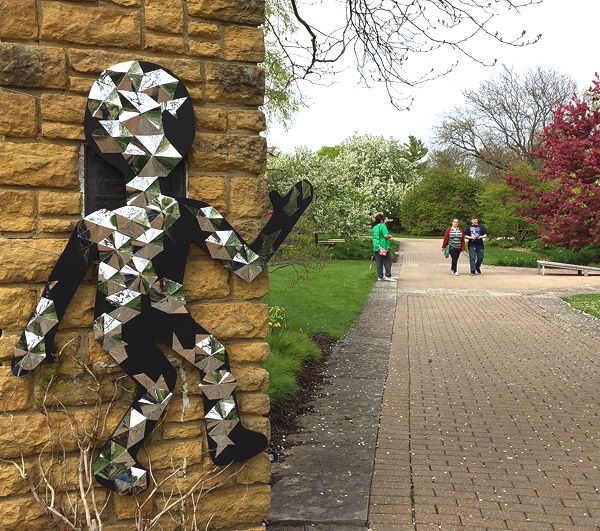
Artist: Margaret Wiley
Title: "Broken Mirror"
Mirror neurons fire both when an individual performs an action and observes an action. When mirror neurons do not function typically, like in individuals with Autism Spectrum Disorder (ASD), the ability to perceive others is inhibited. The distorted mirror figure prevents us from seeing a clear reflection; this represents the difficulty one with ASD may have in observing and learning from others.
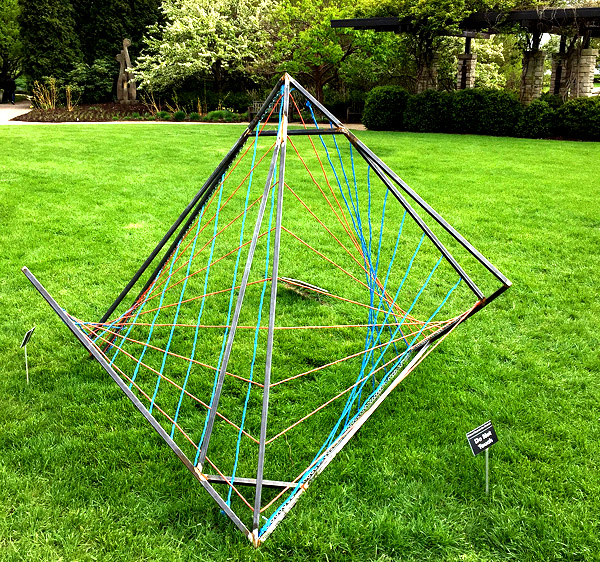
Artist: Joel Cryer
Title: "Hyperbolic Paraboloid Trellis"
The hyperbolic paraboloid is a plane with two main curves diverging in three dimensions. These paraboloids and their mathematical kin are visible in nature in the crooks of branches, the structures of certain flowers and the ridged growth forms of corals and some fungi.
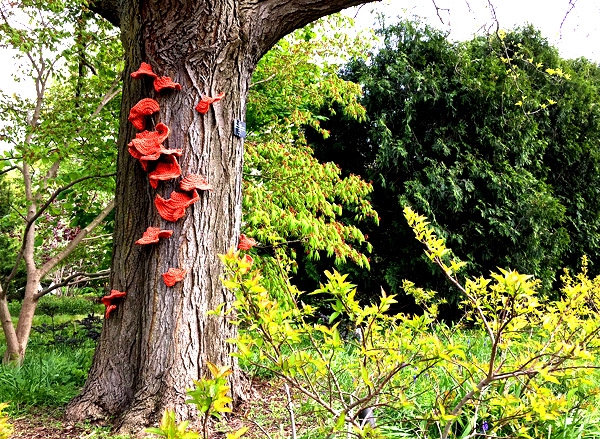
Artist: Katie Schofield
Title: "Turkey Tails"
This crocheted installation is inspired by turkey tail fungi, an ever present sight in the woods. Fungi are an important part of our ecosystem, breaking down dead organic material into forms other organisms can use, helping to transform trees into soil in slow, small movements.
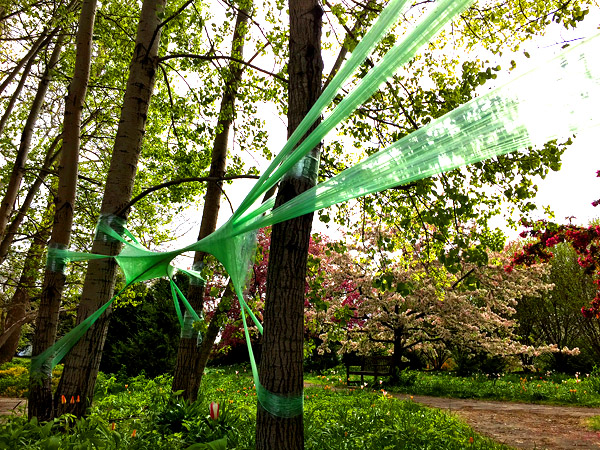
Artist: Peter Krsko
Title: "Stabilimentia"
Spiders create decorative elements within their webs to attract prey, to camouflage, to signal and communicate. After studying the spiders’ movement and repeating it by stretching thin plastic, this form happened.
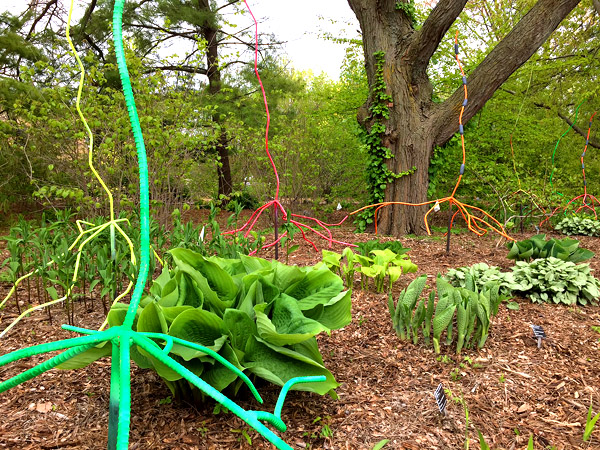
Artists: Rebecca Green and Leo Steiner
Title: "Neon Neurons"
This piece was inspired by neurological development. As the brain develops, axons become increasingly myelinated, which allows for better communication between neurons. The brain doesn’t stop developing until early to mid-20s, so as you walk along the path, you will notice the amount of myelin increasing as if you were walking through a developing brain.
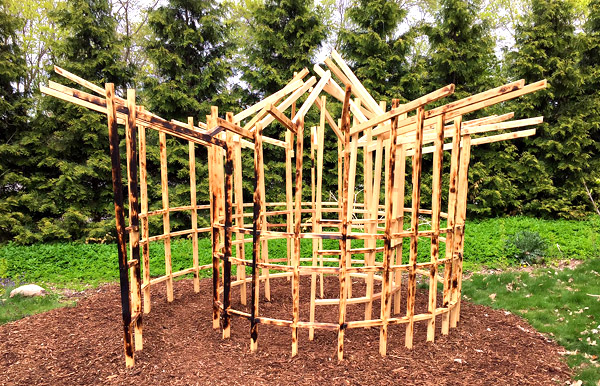
Artists: Halley Feil and Kevin Raymer
Title: "Conch Out"
This structure represents the acidification process happening to organisms who form shells out of calcium carbonate in the oceans. Due to excess CO2 in the atmosphere that the ocean is absorbing, chemical imbalances are causing shells and corals to disintegrate. The goal is to spread awareness by creating an interactive body of what will soon be no more, if changes in carbon emission usage do not decrease.
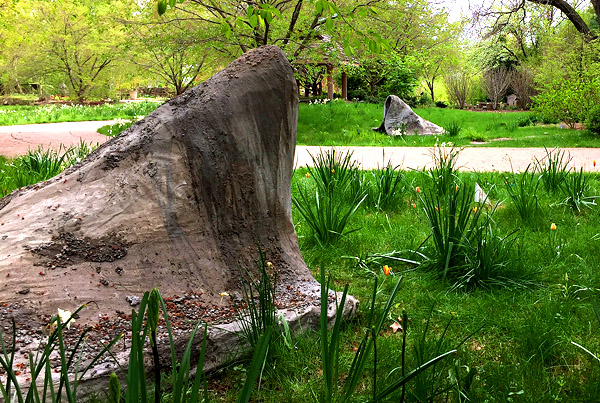
Artist: Christopher "CJ" Jossart
Title: "Non-Euclidean Growth"
This non-Euclidean growth demonstrated by the concrete folds illustrate what happens as life grows larger as the space it is in. The folds mimic the surfaces that can be found on the shells, petals and other tissues in nature.
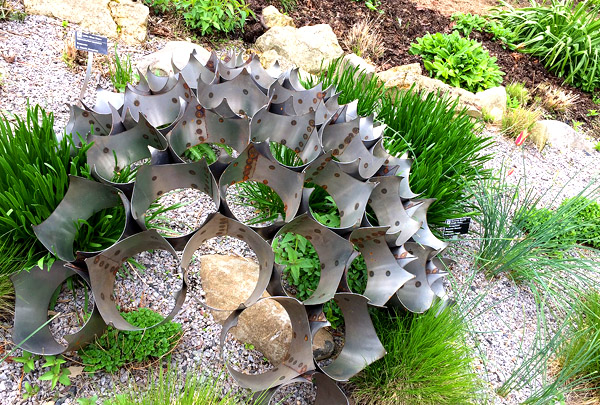
Artist: Peter Krsko
Title: "Monarda"
In late January, during a hike through a thawing marsh, I came across dry plants with the remnants of what must have been a flower a few months earlier. Back in the studio I was intrigued to rebuild the dead flower by attaching truncated cones to each other, until the spherical surface emerged.
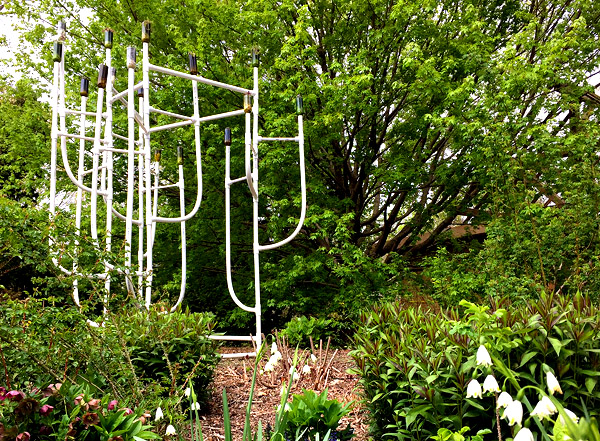
Artists: Margaret Seybold and Jessi Havens
Title: "Growing"
Every tree functions as a colossal distribution network that pumps thousands of gallons of water and sap throughout its body. In buildings, PVC pipes are used to distribute water. Here, they replace the trunk and branches of trees to support the plants living at their ends.
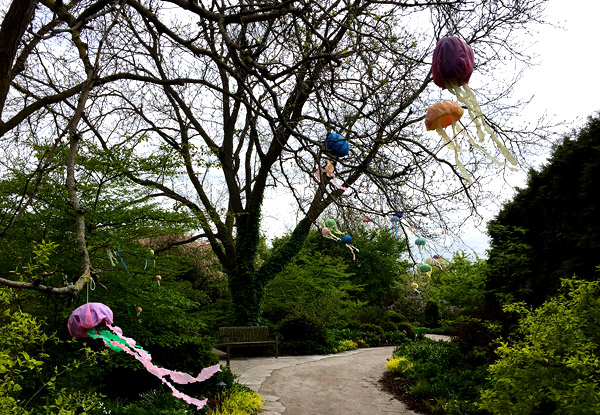
Artist: Patrick Noel
Title: "One Big Family"
Jellyfish move in massive colonies through the oceans. Drifting on the currents to get to their destination, they manage to float together as a large family.
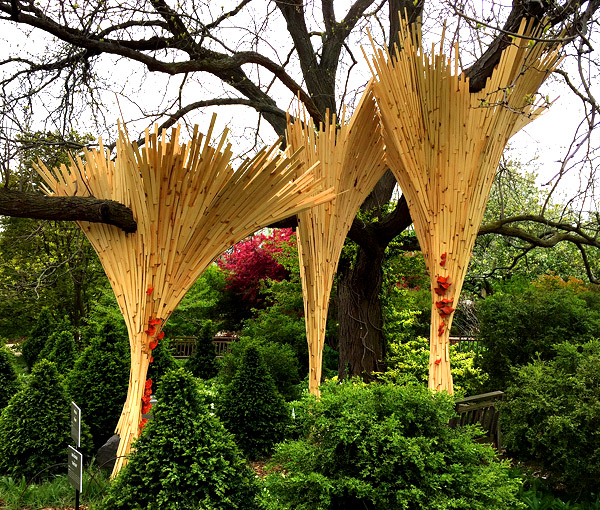
Artists: Peter Krsko and Katie Schofield
Title: "Renewal"
The materials intended for the construction industry are made by harvesting trees and milling them into sterile, right-angled forms. Built during the time of spring growth and inspired by long walks in the woods, the lumber and lath are returned back to their original organic form.
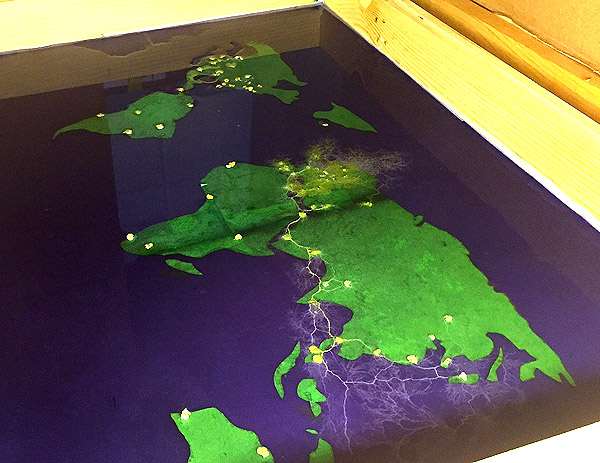
Artist: Kayla Pfeiffer-Mundt
Title: "Slime Mold Pandemic"
Infectious disease has been with humanity for millennia, and will likely continue to be a problem far into the future. Time-lapse photography shows a slime mold (representing an infectious pathogen) spreading across a map of the world. The purpose of this art piece is to show that in an interconnected and globalized world, we are all vulnerable to infectious disease risks.
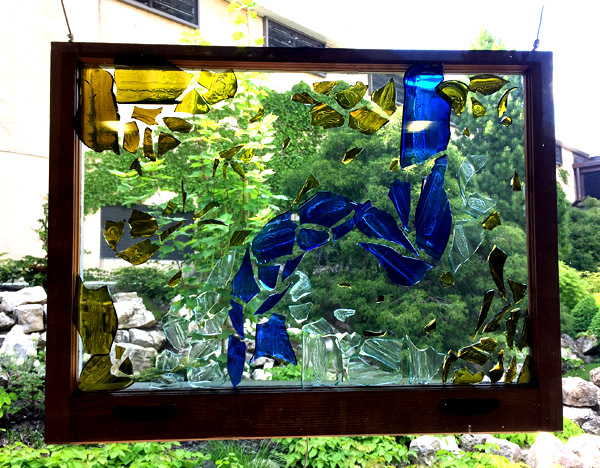
Artist: Olivia Sanderfoot
Title: "Shattered Landscapes"
Habitat fragmentation is a major threat to thousands of species. Unintentionally, humans have destroyed much of the intact habitat that plants and animals rely on for their survival. This piece was created to illustrate the violent nature of habitat fragmentation and its effect on ecological communities.
Other Installations:
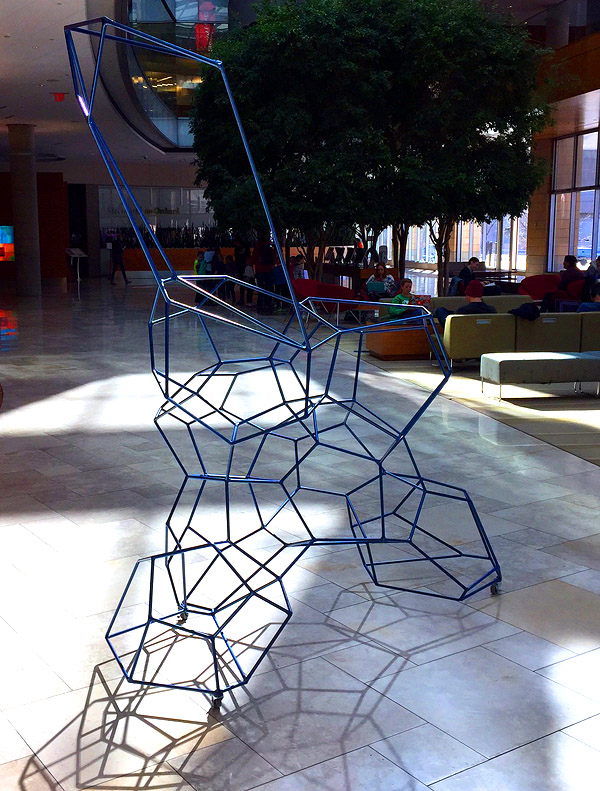
Artist: Peter Krsko
Title: "Inner Foam"
The lines suggest the boundaries between the cells in a compartmentalized space, such as bubbles in foam, cells in biological tissue or vesicles. External stimuli or intercellular disequilibria choreograph their shape. Created for The Wisconsin Institutes for Discovery, University of Wisconsin-Madison.
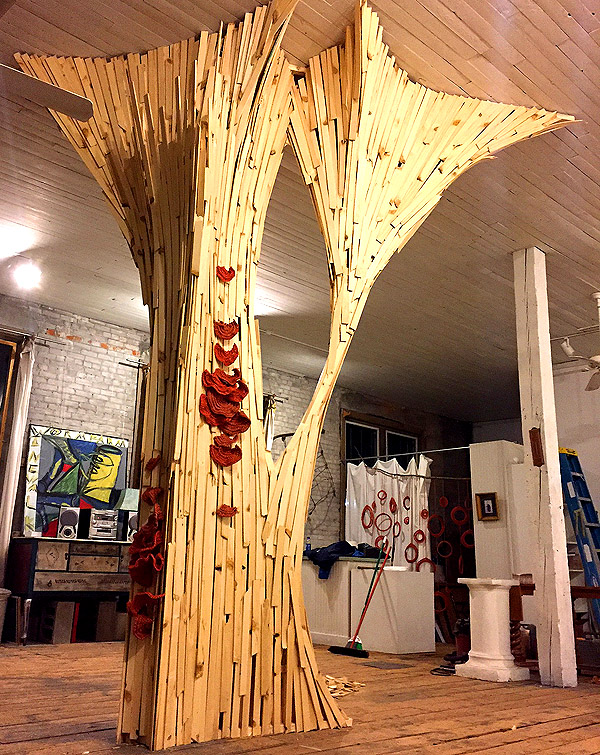
Artists: Peter Krsko and Katie Schofield
"Untitled"
in Woolen Mill Gallery, Reedsburg, WI
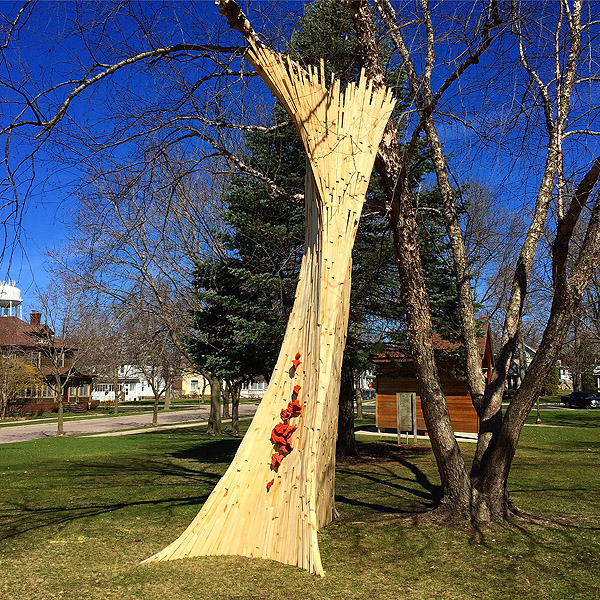
Artist: Peter Krsko and Katie Schofield
Title: "Cohesion Tension"
in City Park, Reedsburg, WI
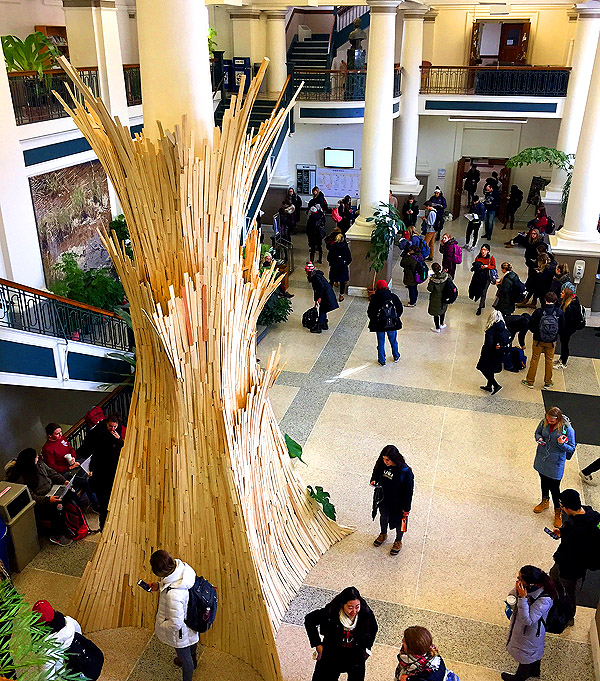
Artist: Peter Krsko
"Untitled"
in Birge Hall, University of Wisconsin-Madison